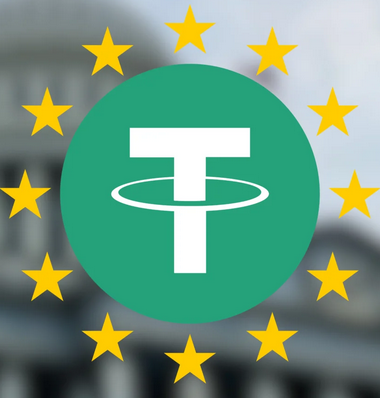Tether taps Jesse Spyro as head of government affairs
Tether, Inc. announced Jesse Spyro as its new head of government affairs. In his new role, Spyro will lead Tether’s policy and engagement with lawmakers, regulators, and key stakeholders
Tether, Inc. announced Jesse Spyro as its new head of government affairs. In his new role, Spyro will lead Tether’s policy and engagement with lawmakers, regulators, and key stakeholders.
Jesse Spyro will become the new head of government affairs at Tether, Inc., overseeing regulations and engagement with lawmakers. Spyro brings previous experience from his role as head of regulatory relations for PayPal’s blockchain and digital currencies branch.
Previously, Spyro also served in the role of chief government affairs officer at Chainalysis, a prominent publisher of wallet tracking reports and blockchain mapping.
“Through education and engagement, I look forward to working with industry, lawmakers, and government agencies as we continue to grow Tether and the ecosystem together,” said Spyro.
Spyro arrives at a time when the stablecoin issuer’s influence is at an all-time high as a widely used stablecoin for payments, DeFi, and centralized trading. Currently, Tether is also fully backed with cash and US debt, with peak earnings from interest rates. The attempt to be transparent and compliant arrives after years of doubts about the firm’s solvency.
In spite of everything, Tether continues to receive skepticism amid reports of inaccessible information about fiat reserves. The only reports come from Tether itself, or from known public wallets with partial reserves.
Tether still faces limitations in the EU
Tether still faces restrictions in the European Union, after not matching the requirements for fiat backing. The effect of Markets in Crypto Assets (MiCA) regulation limited the services and trading products available in the Euro Area. Despite this, USDT remains one of the most widely used stablecoins, both in native and bridged form on multiple blockchains.
Tether lost the regulatory battle to Circle (USDC), which became the first fully MiCA-compliant asset due to its fiat backing. Additional restrictions may be unrolled by the end of the year, putting further strain on Tether’s performance in the Euro Area.
The coming months may bring new challenges to Tether, Inc., mostly due to its lack of transparent banking reserves. Tether’s CEO Paolo Ardoino has mentioned that keeping funds in a bank account may actually be riskier. The stablecoin issuer still uses fiat backing, but also puts its reserves and earnings back into government debt as the safest and most liquid vehicle available.
The other big problem for Tether is claims of using USDT to bypass cross-border banking sanctions. A total of 1,776 USDT addresses have been banned due to suspicious activity or hacking. However, USDT transfers continue and some are tied to illegal activity or financial flows from sanctioned countries.
Chinese OTC markets also show a preference for USDT, often seeing up to 20% premiums for the stablecoin. USDT has been used since its inception as a tool to bypass Chinese capital controls. The available OTC trades for USDT are extremely risky and often require trust and third-party fintech apps to sell the stablecoin at a premium.
For instance, the Iranian exchange Nobitex, which should be firmly on the Tether ban list, has continued to receive and use USDT. Nobitex is also connected to the Bitfinex hot wallet. Tether has moved in to ban some of the known wallets, but overall the bans are not proportionate to the activity.






